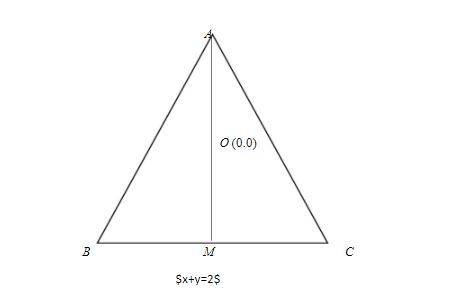Question
Question: If an equilateral triangle, having centroid at the origin, has a side along the line, \(x+y=2\), the...
If an equilateral triangle, having centroid at the origin, has a side along the line, x+y=2, then the area (in sq. units) of this triangle is:
A. 6
B. 63
C. 293
D. 36
Solution
In this question we have to find out the area of the equilateral triangle, so, first of all we have to find out the side of the triangle. Once we find the length of triangle we can find the area of equilateral triangle by using the formula A=43a2 where ais the length of side of triangle .
Its origin is the centroid of the equilateral triangle so here we use the property that centroid divides the median in 2:1 ratio. Also use perpendicular distance formula to find the perpendicular distance between centroid and the side of triangle using the formula, if ax+by+c=0 be any straight line and (α,β)be any point then perpendicular distance is given by
d=a2+b2aα+bβ+c
Complete step-by-step answer:
First we draw the figure as below

Let AB, BC, AC be the sides of the equilateral triangle. Let AB=BC=CA=a. Let O is the origin of the triangle and side BC is along the straight line x+y=2, OM is the perpendicular distance from O to BC, so we can find OM by using the formula
d=a2+b2aα+bβ+c
As we have equation of straight line x+y−2=0 and (α,β)is (0,0)
So, we have a=1, b=1, c=−1
Hence, we have
d=12+121.(0)+1(0)−2d=2−2d=2
So here we find OM
As we know that centroid divides the median AM in 2:1ratio
Hence, we can write
OMAO=12
Adding both side 1 we have
